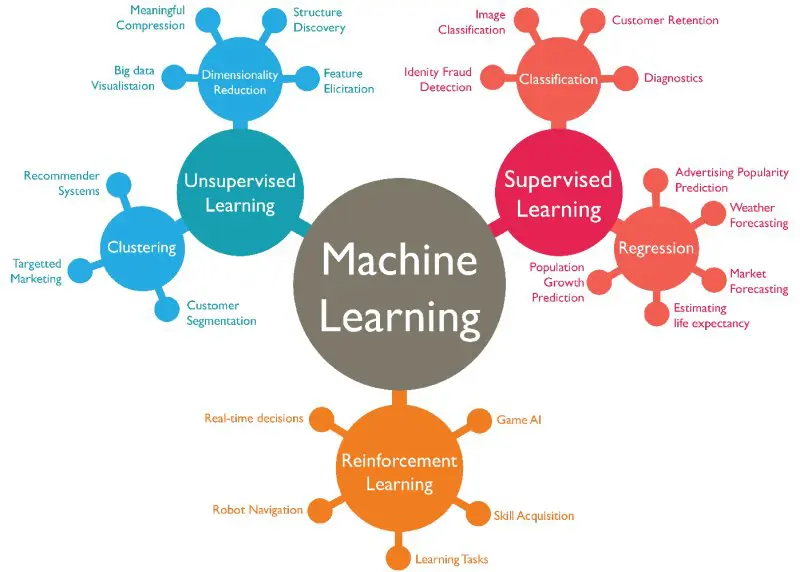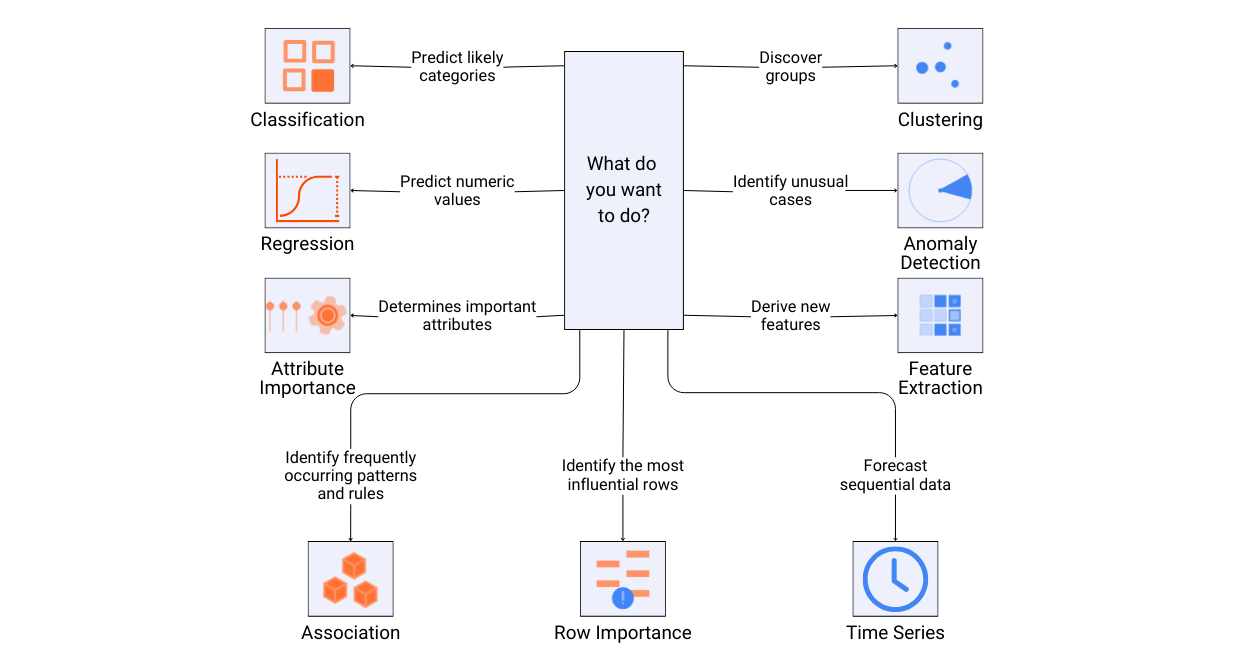Be it Netflix, Amazon, or another mega-giant, their success stands on the shoulders of experts, analysts are busy deploying machine learning through supervised, unsupervised, and reinforcement successfully.
The tremendous amount of data being generated via computers, smartphones, and other technologies can be overwhelming, especially for those who do not know what to make of it. To make the best use of data researchers and programmers often leverage machine learning for an engaging user experience.
Many advanced techniques that are coming up every day for data scientists of all supervised, and unsupervised, reinforcement learning is leveraged often. In this article, we will briefly explain what supervised, unsupervised, and reinforcement learning is, how they are different, and the relevant uses of each by well-renowned companies.

Supervised learning
Supervised machine learning is used for making predictions from data. To be able to do that, we need to know what to predict, which is also known as the target variable. The datasets where the target label is known are called labeled datasets to teach algorithms that can properly categorize data or predict outcomes. Therefore, for supervised learning:
- We need to know the target value
- Targets are known in labeled datasets
Let’s look at an example: If we want to predict the prices of houses, supervised learning can help us predict that. For this, we will train the model using characteristics of the houses, such as the area (sq ft.), the number of bedrooms, amenities nearby, and other similar characteristics, but most importantly the variable that needs to be predicted – the price of the house.
A supervised machine learning algorithm can make predictions such as predicting the different prices of the house using the features mentioned earlier, predicting trends of future sales, and many more.
Sometimes this information may be easily accessible while other times, it may prove to be costly, unavailable, or difficult to obtain, which is one of the main drawbacks of supervised learning.
Saniye Alabeyi, Senior Director Analyst at Garnet calls Supervised learning the backbone of today’s economy, stating:
“Through 2022, supervised learning will remain the type of ML utilized most by enterprise IT leaders” (Source).
Types of problems:
Supervised learning deals with two distinct kinds of problems:
- Classification problems
- Regression problems
Classification problem: In the case of classification problems, examples are classified into one or more classes/ categories.
For example, if we are trying to predict that a student will pass or fail based on their past profile, the prediction output will be “pass/fail.” Classification problems are often resolved using algorithms such as Naïve Bayes, Support Vector Machines, Logistic Regression, and many others.
Regression problem: A problem in which the output variable is either a real or continuous value, s is defined as a regression problem. Bringing back the student example, if we are trying to predict that a student will pass or fail based on their past profuse, the prediction output will be numeric, such as “68%” likely to score.
Predicting the prices of houses in an area is an example of a regression problem and can be solved using algorithms such as linear regression, non-linear regression, Bayesian linear regression, and many others.
Here’s a comprehensive guide to Machine Learning Model Deployment
Why Amazon, Netflix, and YouTube are great fans of supervised learning?
Recommender systems are a notable example of supervised learning. E-commerce companies such as Amazon, streaming sites like Netflix, and social media platforms such as TikTok, Instagram, and even YouTube among many others make use of recommender systems to make appropriate recommendations to their target audience.
Unsupervised learning
Imagine receiving swathes of data with no obvious pattern in it. A dataset with no labels or target values cannot come up with an answer to what to predict. Does that mean the data is all waste? Nope! The dataset likely has many hidden patterns in it.
Unsupervised learning studies the underlying patterns and predicts the output. In simple terms, in unsupervised learning, the model is only provided with the data in which it looks for hidden or underlying patterns.
Unsupervised learning is most helpful for projects where individuals are unsure of what they are looking for in data. It is used to search for unknown similarities and differences in data to create corresponding groups.
An application of unsupervised learning is the categorization of users based on their social media activities.
Commonly used unsupervised machine learning algorithms include K-means clustering, neural networks, principal component analysis, hierarchical clustering, and many more.
Reinforcement learning
Another type of machine learning is reinforcement learning.
In reinforcement learning, algorithms learn in an environment on their own. The field has gained quite some popularity over the years and has produced a variety of learning algorithms.
Reinforcement learning is neither supervised nor unsupervised as it does not require labeled data or a training set. It relies on the ability to monitor the response to the actions of the learning agent.
Most used in gaming, robotics, and many other fields, reinforcement learning makes use of a learning agent. A start state and an end state are involved. For the learning agent to reach the final or end stage, different paths may be involved.
- An agent may also try to manipulate its environment and may travel from one state to another
- On success, the agent is rewarded but does not receive any reward or appreciation for failure
- Amazon has robots picking and moving goods in warehouses because of reinforcement learning
Also learn about Retrieval Augmented Generation
Numerous IT companies including Google, IBM, Sony, Microsoft, and many others have established research centers focused on projects related to reinforcement learning.
Social media platforms like Facebook have also started implementing reinforcement learning models that can consider different inputs such as languages, integrate real-world variables such as fairness, privacy, and security, and more to mimic human behavior and interactions. (Source)
Amazon also employs reinforcement learning to teach robots in its warehouses and factories how to pick up and move goods.
Comparison between supervised, unsupervised, and reinforcement learning
Caption: Differences between supervised, unsupervised, and reinforcement learning algorithms
| Supervised learning | Unsupervised learning | Reinforcement learning | |
| Definition | Makes predictions from data | Segments and groups data | Reward-punishment system and interactive environment |
| Types of data | Labeled data | Unlabeled data | Acts according to a policy with a final goal to reach (No or predefined data) |
| Commercial value | High commercial and business value | Medium commercial and business value | Little commercial use yet |
| Types of problems | Regression and classification | Association and Clustering | Exploitation or Exploration |
| Supervision | Extra supervision | No | No supervision |
| Algorithms | Linear Regression, Logistic Regression, SVM, KNN and so forth | K – Means clustering,
C – Means, Apriori |
Q – Learning,
SARSA |
| Aim | Calculate outcomes | Discover underlying patterns | Learn a series of action |
| Application | Risk Evaluation, Forecast Sales | Recommendation System, Anomaly Detection | Self-Driving Cars, Gaming, Healthcare |
Which is the better Machine Learning technique?
We learned about the three main members of the machine learning family essential for deep learning. Other kinds of learning are also available such as semi-supervised learning, or self-supervised learning.
Supervised, unsupervised, and reinforcement learning, are all used for different to complete diverse kinds of tasks. No single algorithm exists that can solve every problem, as problems of different natures require different approaches to resolve them.
Despite the many differences between the three types of learning, all of these can be used to build efficient and high-value machine learning and Artificial Intelligence applications. All techniques are used in different areas of research and development to help solve complex tasks and resolve challenges.
If you would like to learn more about data science, machine learning, and artificial intelligence, visit the Data Science Dojo blog.
Written by Alyshai Nadeem





